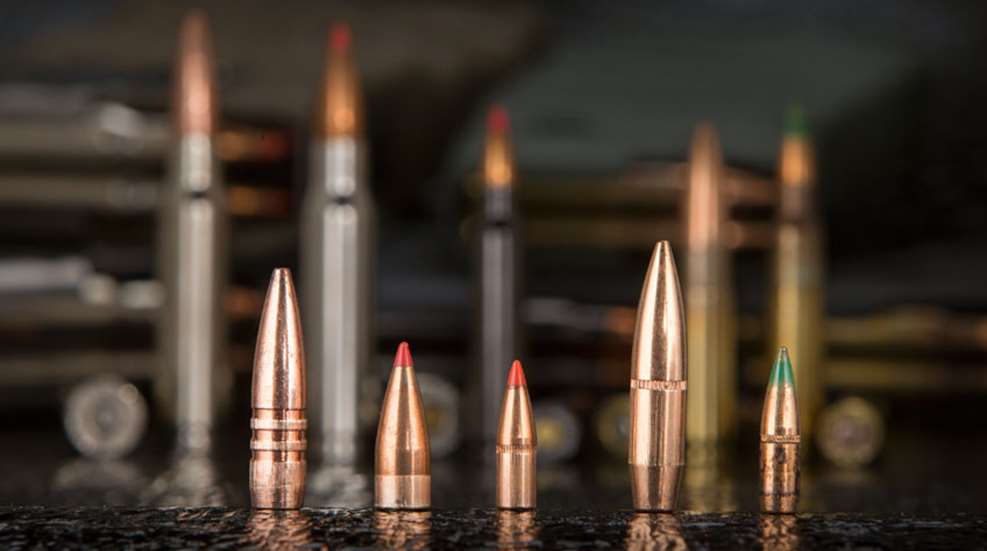
I remember very clearly the day I really began paying attention to why bullets behave the way they do once fired. I was sitting in a classroom, getting schooled by an R&D specialist in my Army unit over the misconceptions my comrades and I shared about close-range bullet performance. As with everyone else in the military at that time, we were largely stuck using non-expanding projectiles in combat. We knew standard-issue “full metal jacket” ammo (in any caliber) was less-than-optimal for wound potential and believed that our long guns posed the greatest risk (from over-penetration) to non-combatants and friendly troops when working in close quarters. We blindly assumed lower-powered cartridges would better serve us and so relied heavily on submachine guns and handguns for work in confined spaces where non-combatants were present.
A room full of Type As with mixed combat experience is like a petri dish for arguments, so being told that we had often been carrying the wrong guns pretty much set the room on fire. Nonetheless our briefer, also an experienced operational member of our unit, patiently walked us through the results of an extensive test that was very similar to the now-familiar FBI ammunition protocol. We saw cold, hard evidence that when using FMJ ammunition at close range, our rifle rounds— 5.56 NATO in particular—had a much lower chance of passing through threat targets than the .45 ACP and 9 mm we had been using. Those traditional FMJ pistol bullets smoked right through gel blocks and most intermediate barriers due to bullet designs and much slower velocities. This is old-hat info now, but it was not well understood in those days. By contrast, our 62-grain M855 loads tended to yaw, upset and fracture at close range, causing more tissue damage and not penetrating as deeply as FMJ handgun ammo. In spite of all the bad press the old 5.56 mm “green-tip” load has garnered over the years, it usually does its job when moving at high velocity. Problems with over-penetration and small wound channels come into play as these bullets slow down along their trajectory.
In the end, the knowledge of what these bullets were doing greatly simplified our lives. Our rifle-caliber guns were much better suited for fighting into and out of denied environments so it was a win-win in the end. Unfortunately, our fighting troops must still perform legal gymnastics around the idiotic prohibitions on the use of expanding ammunition in wartime. There have been some improvements for special circumstances but most of our nation’s warriors are hamstrung when it comes to ammunition choices.
Fortunately, our law enforcement professionals are not normally so-constrained and use ammunition that is actually designed to stop threats quickly. Doubly fortunate is that as Joe and Jane Citizen, we can choose the ammunition that best fits our needs and budgets, too. Right off the bat, that gives us a huge advantage with pistol-caliber guns of all sizes. Modern defensive-handgun loads are designed to expand at much slower velocities than those of even a decade ago. That trend is partially driven by the wide popularity of concealable handguns with very short barrels. If you happen to have a larger-framed semi-auto pistol like the SIG Sauer MPX, CZ USA Scorpion or an AR pistol, you likely have a barrel somewhere between 6 to 14.5 inches. The extra velocity provided by that longer barrel further enhances performance.
Likewise, rifle-caliber carbines and pistols can be effective at close range when paired with the right ammunition. The preferred bullet choices are those that A) always go bang when firing pin meets primer, B) hit what they are aimed at and C) have proven themselves to expand consistently at close range/high velocity. Most premium ammunition makers have centerfire rifle offerings that fit this bill in popular chamberings like .300 BLK, 5.56 NATO, 7.62x39 mm, 6.8 Rem. SPC and even .308 Win.
Several manufacturers load Barnes’ excellent TSX bullets, which expand very well even after encountering barriers and at slower velocities. Hornady’s TAP FPD rifle and Critical Defense handgun ammunition lines incorporate reliably expanding projectiles, nickel-plated cases and loads tailored for defensive use. Lehigh Defense has been quietly turning out a stream of truly innovative projectile designs for years. Its cavernous bullets open up drastically and are worth a serious look for very serious purposes.
Using these higher-powered cartridges in close confines brings some considerations into play beyond bullet performance in tissue. Just as with handgun calibers, the potential for over-penetration and injury to anyone other than the intended target is always a major concern. Fortunately, as an expanding projectile moves through tissue, it loses energy due to the increase in resistance as the frontal surface area is enlarged. In addition to raising the wound potential of the bullet, the risks of over-penetration tend to go down as the rate of expansion goes up. The high-impact velocities of rifle bullets fired at close range aids both of these outcomes.
Shorter carbine barrels mean less powder gets burned in the tube, resulting in a vision-impairing ball of fire as hot gasses and unburned powder crash into the atmosphere beyond the muzzle. Good flash hiders beat muzzle brakes for rifle-caliber long guns that may be used in the dark. Hornady and other manufacturers are increasingly using low-flash powders in their defensive ammo to help reduce muzzle flash as well.
While a long gun may not be your first line of home defense, it can be a suitable second, more-determined line. With the right ammo and skills, these larger firearms can increase your ability to stop a threat, take control of the situation and protect loved ones.





































